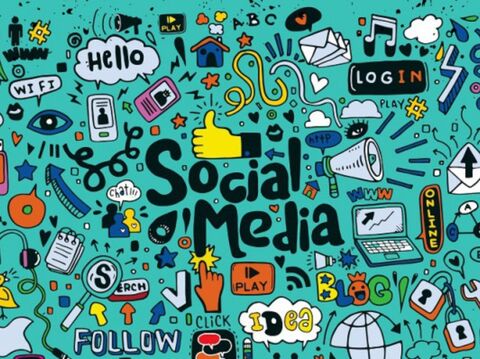Case Studies: Successful Customer Lifecycle Management Frameworks And Best Practices

Think about knowing what your customers need all the time. This can help your business grow. A good customer lifecycle management framework helps you do this. We will look at successful companies and learn from them.
Customer Lifecycle Management (CLM) is a way for businesses to keep customers happy and loyal. It helps companies understand and meet their customers' needs at every stage.
This blog will explore case studies of companies successfully implementing CLM frameworks and analyse examples of different project life cycles.
Case Study 1: Spartan Race
Spartan Race organises obstacle races around the world. To encourage more people to sign up and stay engaged, they contacted customers based on their actions and past experiences.
Strategy
Spartan Race used proactive messaging to talk to customers. They reached out at key times to answer questions or solve problems. They also made experiences personal, adapting to each customer’s needs.
-
Proactive Messaging: They talked to customers at important times. Agents answered questions and solved problems. This helped more people sign up.
-
Personalised Experiences: They used customer data to make each interaction special. Customers felt valued and understood.
-
Continuous Support: They kept helping customers even after they signed up. This built trust and loyalty.
Outcomes
The results were great. Customers were 60% more likely[1] to sign up when they were contacted. This method increased sign-ups and made customers happier.
Key Takeaways
-
Steady Engagement: Talking to customers before they ask can help them decide to buy.
-
Personalisation: Making interactions special keeps customers happy.
-
Consistent Support: Helping customers all the time builds loyalty.
Case Study 2: Bones Coffee Company
Bones Coffee Company sells coffee online. They had trouble with their marketing reports, so they worked with a marketing agency called ATTN to fix this.
Strategy
ATTN used a tool called Triple Pixel to track data better. They also used surveys after purchases to understand customers better, which helped them improve their marketing.
-
Triple Pixel Implementation: This tool tracked data with accuracy. It gave real-time insights about customers.
-
Post-Purchase Surveys: Surveys after buying helped collect feedback. They used this information to improve their strategies.
-
Optimised Marketing Efforts: They changed their marketing based on customer feedback. This made their marketing more efficient.
Outcomes
Within 45 days, Bones Coffee saw a big improvement. Their YouTube ad spending became more efficient by 960%.[2] Their net profit grew by 701%, and their cost per acquisition decreased by 84%.
Key Takeaways
-
Accurate Attribution: Tracking data correctly is important for good marketing.
-
Customer Feedback: Using feedback to refine strategies is effective.
-
Scalable Marketing: Efficient marketing leads to better profits.
Case Study 3: McKinsey & Company Clients
McKinsey & Company helps many clients with their customer lifecycle management frameworks. They use deep analytics, loyalty programs, and transformation strategies.
Strategy
McKinsey integrates a lot of data to understand customers. They help clients build loyalty programs and improve customer experiences. They also make data-driven changes at the front-line level.
-
Data Integration: They use a lot of data to see customer behaviour. This gives deep insights into what customers want.
-
Loyalty Programs: They build programs to keep customers coming back. These programs make customers feel valued.
-
Transformational Change: They make changes based on data. This helps in making better decisions.
Outcomes
Clients saw great results. Sales and EBITDA grew by 20-30%.[3] A retail bank reduced credit losses of $110 million.
Key Takeaways
-
Data Integration: Using a lot of data gives valuable customer insights.
-
Loyalty Programs: Good loyalty programs keep customers returning.
-
Transformational Change: Data-driven changes improve customer management.
Case Study 4: Amazon
Amazon is a global e-commerce leader. It uses consumer lifecycle management to keep customers happy and focuses on data, personalisation, and service.
Strategy
Amazon uses advanced data analytics. They personalise customer interactions and improve all stages of the customer journey.
-
Data Analytics: They collect a lot of customer data. This helps make shopping experiences personal.
-
Prime Membership: The Prime program offers many benefits. These include free shipping and exclusive deals, which boost loyalty.
-
Customer Service: Amazon provides quick and effective customer service. This keeps customers satisfied.
Outcomes
Amazon’s methods lead to high customer loyalty and revenue. Prime members spend more than non-members, helping Amazon stay ahead in the market.
Key Takeaways
-
Advanced Data Use: Data analytics help understand and personalise customer experiences.
-
Loyalty Programs: Value-added services increase customer loyalty.
-
Exceptional Service: Good customer service leads to satisfaction and retention.
Case Study 5: HubSpot
HubSpot is a CRM and marketing software company that uses a strong customer lifecycle management framework to grow and keep customers happy.
Strategy
HubSpot focuses on providing value at all stages of the customer journey. They offer educational content, automated marketing, and strong support.
-
Educational Content: They provide blogs, eBooks, and webinars. These resources help attract and engage customers.
-
Marketing Automation: They use tools to automate and personalise marketing. This includes targeted emails and content recommendations.
-
Customer Support: HubSpot offers great support through various channels. This ensures customers get help when they need it.
Outcomes
HubSpot’s approach leads to high customer retention and satisfaction. Their user base grows continuously, with customers seeing better business outcomes.
Key Takeaways
-
Value-Driven Content: Educational resources attract and engage customers.
-
Automation Tools: Automating marketing personalises interactions and nurtures leads.
-
Responsive Support: Good support enhances satisfaction and retention.
Case Study 6: Netflix
Netflix is a streaming giant. They use customer lifecycle management to meet customer needs and preferences.
Strategy
Netflix uses algorithms to recommend content. They keep their content library updated and engage users continuously.
-
Content Recommendation: Algorithms analyse viewing habits. This helps suggest content that users like.
-
Content Library: Regular updates keep users interested. New releases and varied genres cater to different tastes.
-
User Engagement: Interactive features and personalised emails keep users engaged. They inform users about new releases and recommendations.
Outcomes
Netflix’s strategies result in high user engagement and retention. The platform’s subscriber base keeps growing, with more viewing hours and satisfied customers.
Key Takeaways
-
Personalised Recommendations: Algorithms help keep users interested.
-
Content Updates: Regular updates keep users coming back.
-
Engagement Features: Interactive and personalised communication enhances user experience.
Best Practices for Consumer Lifecycle Management
After some examples of the project life cycle, let us understand the best practices. You need clear strategies to make the most of your customer lifecycle management. Here are proven practices that successful companies use to keep their customers happy and loyal:
-
Segmenting Customers
Effective CLM involves segmenting customers based on demographics, behaviours, and journey stages. This segmentation helps tailor approaches to different needs, improving engagement and retention.
-
Demographic Segmentation
Group customers by age, gender, income, or location. This helps target marketing efforts accurately.
-
Behavioural Segmentation
Analyse actions like purchase history and online behaviour. This predicts future needs and offers timely interventions.
-
Journey Stage Segmentation
Using predictive segments, know where customers are in their journey. New customers might need more help, while loyal ones could get exclusive offers.
-
Personalised Experiences
It is crucial to create personalised experiences for customers at every stage. Targeted marketing, customised onboarding, and ongoing support help achieve this.
-
Targeted Marketing
Personalised messages based on data increase relevance. This enhances engagement.
-
Customised Onboarding
Tailored onboarding helps customers use products well. This reduces churn and increases satisfaction.
-
Ongoing Support
Continuous support keeps customers engaged. Regular updates maintain strong relationships.
-
Continuous Feedback
Collecting and using feedback improves strategies and customer satisfaction. Tools like post-purchase surveys and Net Promoter Scores (NPS) are helpful.
-
Post-Purchase Surveys
Feedback after buying helps find improvement areas. Customers appreciate being heard, which boosts loyalty.
-
Net Promoter Scores (NPS)
NPS measures satisfaction and loyalty. High NPS shows strong customer relationships.
-
Feedback Integration
Using feedback in processes ensures constant improvement. This adapts strategies to meet customer needs.
-
Cross-Functional Collaboration
Successful CLM requires seamless collaboration between marketing, sales, and support, which provides a cohesive and consistent experience.
-
Integrated Teams
Cross-functional teams manage interactions together. This avoids siloed operations.
-
Consistent Communication
Aligned messaging prevents mixed signals. Customers get a seamless experience.
Wrapping Up
A good customer lifecycle management framework is key to a business's success. These case studies show that managing each part of the customer's journey can help. It improves customer happiness, loyalty, and sales. Businesses should engage with customers, create personal experiences, keep track of data, and always seek customer feedback to improve their CLM.
Discover how GrowthJockey can help you implement effective customer lifecycle management frameworks and enhance customer satisfaction, loyalty, and revenue. Contact GrowthJockey today to get started!
Customer Lifecycle Management FAQs
1. How can small businesses start using customer lifecycle management?
Small businesses can begin by grouping customers by age or what they buy. They should send special offers and help that fit each customer's needs.
Using software to keep track of customer talks and feedback can help, too. They should change their plans based on what they learn from customers to keep them happy.
2. What problems do companies face when managing customer lifecycles?
Companies often find it difficult to use data from different parts of the business together. This can make the customer's experience feel disconnected, and it's also tough to know if what they are doing is working well.
To fix these problems, companies need good ways to manage data and must communicate clearly across all departments.
3. Why is it important to keep asking customers for their opinions?
Asking customers for their opinions helps companies understand what they like and don't like. This information is important for improving products and services. Regularly talking to customers and using their feedback can make them feel valued, helping build a strong and lasting relationship with them.








